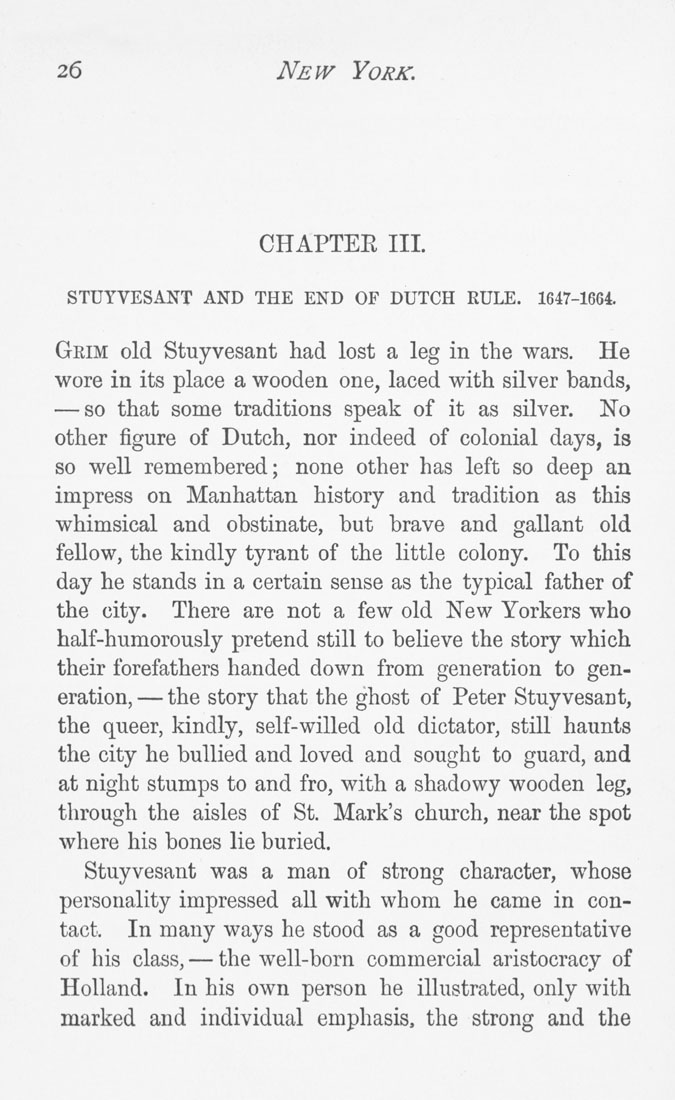26 New York.
CHAPTEE III
STUYVESANT AND THE END OF DUTCH RULE. 1647-1664.
Grim old Stuyvesant had lost a leg in the wars. He
wore in its place a wooden one, laced with silver bands,
— so that some traditions speak of it as silver. No
other figure of Dutch, nor indeed of colonial days, is
so well remembered; none other has left so deep an
impress on Manhattan history and tradition as this
whimsical and obstinate, but brave and gallant old
fellow, the kindly tyrant of the little colony. To this
day he stands in a certain sense as the typical father of
the city. There are not a few old New Yorkers who
half-humorously pretend still to believe the story which
their forefathers handed down from generation to gen¬
eration, — the story that the ghost of Peter Stuyvesant,
the queer, kindly, self-willed old dictator, still haunts
the city he bullied and loved and sought to guard, and
at night stumps to and fro, with a shadowy wooden leg,
through the aisles of St. Mark's church, near the spot
where his bones lie buried.
Stuyvesant was a man of strong character, whose
personality impressed all with whom he came in con¬
tact. In many ways he stood as a good representative
of his class, — the well-born commercial aristocracy of
Holland. In his own person he illustrated, only with
marked and individual emphasis, the strong and the
|








